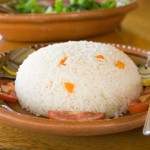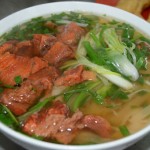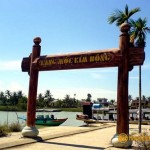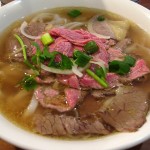Vietnamese meals are rarely divided into separate courses. Rather, all the food is served at once and shared from common dishes set out on a low table. The family sits on mats on the floor, and each person has a rice bowl, chopsticks, and soup spoon.
Family members use the narrow end of the chopsticks to bring food to the mouth and the wide end to serve from the common dishes. Certain foods, such as spring rolls, are picked up and eaten out of the hand. Most meals include soup, a stir-fry or other main dish, a light salad, and a variety of side dishes.
Snacks are often purchased from street vendors. Popular handheld snacks include spring rolls or pork meatballs on a stick. These foods and pho (beef noodle soup) are the equivalent of fast food in Vietnamese cities. Also common between meals are sweet fruits and ice cream, introduced during the Vietnam War era (1960s and 1970s). Another “imported” snack food is a baguette with pâté, a holdover from the years when Vietnam was a colony of France.
Tea ( che or tra ) is the most common beverage in Vietnam. It is common practice to prepare enough tea for the whole day first thing in the morning because traditional Vietnamese hospitality dictates that one must be able to serve tea immediately if unexpected visitors drop by. Tea is served before and after meals, but not during. Vietnamese prefer green (unfermented) tea, but the black tea more familiar to Westerners is available in cities.
Although most Vietnamese prefer tea, coffee is grown in Vietnam and is readily available in cities. Served both hot and cold, caphe is a well-known Vietnamese beverage consisting of coffee with sweetened condensed milk (recipe follows). Fresh coconut milk is another popular drink that is widely available from street vendors, who simply cut the top off a young coconut and then serve it with a straw. A particularly refreshing beverage on a hot day is soda chanh (lemon soda).
Soure: hoian-tourism.com
Post Views:
1,586






